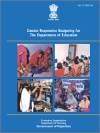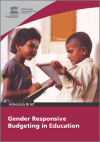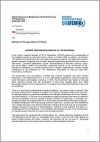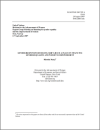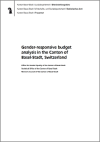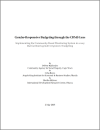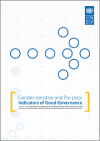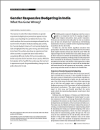FOUND 120 RESULTS
This advocacy brief published in 2010 by UNESCO Asia and Pacific Regional Bureau for Education was written by Reina Ichii. The author argues that achieving the Education for All (EFA) goals by 2015 requires the design and implementation of programmes that are specifically aimed at achieving the desired outcomes. Budgets required for implementing those programmes must be made available and consistently monitored to ensure that funds are spent in the right places and are effective in achieving the...
This fact sheet was produced by UNIFEM in 2007 under the UNIFEM sub -regional programme "Gender-Responsive Budgeting in South East Europe: Advancing...
This paper uses examples from Australia and the Pacific Island Countries and Territorities to address the following questions:How can we assess a government's achievements in gender responsive budgeting? How can gender responsible budgeting be made sustainable in the face of change? What can we expect from GRBs? The paper was presented in a context of increasing evidence that GRB are a positive force in promoting a more equitable distribution of public resources and benefits of development for...
Labour market issues, be those of employment, unemployment, inactivity, wages and the like are very important for every country since they are linked to some of the main indicators of economic wellbeing or lack thereof. These issues and indicators become increasingly important for developing countries that are trying to achieve development and economic growth. Gender indicators within these labour market indicators are of special interest not only due to a long history of gender discrimination...
The aim of this publication is to provide an overview of the latest research findings and discussions in the Canton of Basel-Stadt with regard to “engendering budgetsâ€. The study includes an innovative impact of public expenditure on unpaid care work.
The first debates on gender-responsive budgeting initiatives emerged in Switzerland in 1994, The choice of methods for conducting gender-differentiated analyses and the means by which they are conducted have been informed, and continue to be informed, by the relatively early emergence of gender-responsive budgeting (hereafter GRB) as an issue in Swiss public debate, by the circumstances under which GRB emerged, and by the fact that parliaments at local (municipal/communal), cantonal and federal...
The paper suggests how the Community-Based Monitoring System (CBMS), developed and implemented in 14 countries over the last ten years with financial support from the Canadian International Development Research Centre (IDRC), can be used to facilitate gender-responsive budgeting (GRB) at the local level. In particular, it looks at how CBMS can be used to support local-level GRB (LLGRB) initiatives of civil society and local government.
This paper was prepared as a background to the UNDP Oslo Governance Centre and Indian Council for Social Science Research (ICSSR) International workshop on engendering and empowering governance indicators, New Delhi, April 2005.
The article examines the two main strategies adopted by the Government of India for institutionalizing gender responsive budgeting to highlight what has gone wrong and what needs to be fixed in order to achieve better outcomes for women. This article by Yamini Mishra and Navanita Sinha was published in Economic and Political Weekly.
